Recent Articles
Popular Makes
Body Types
2021 BMW X3 xDrive30e vs. 2021 Audi Q5 55 TFSI e
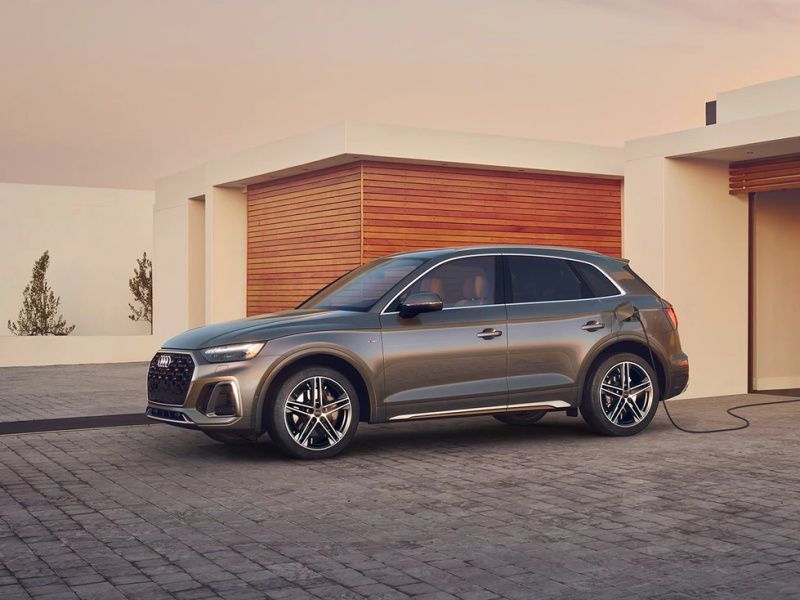
2021 Audi Q5 55 TFSI e ・ Photo by Audi
We were going to start this comparison by counting all the new plug-in hybrid luxury SUVs fighting for your dollars. Unfortunately, we ran out of fingers. It’s a long list. BMW, Audi, Volvo, Mercedes, Lincoln, Land Rover, Porsche, and others are all in the fight, many with multiple entries. And more are on the way. 2021 is shaping up as the year of the plug-in hybrid luxury SUV.
BMW and Audi are both betting big on this technology. For the first time, they’re both offering plug-in hybrid versions of their popular compact crossovers, the BMW X3 and Audi Q5, and the similarities between the two new models are quite striking. They not only cost about the same, but they’re also about the same size and offer similar all-electric driving range. But which is best? Let’s examine the 2021 BMW X3 xDrive30e and the 2021 Audi Q5 55 TFSI e in key areas and decide.
Styling and Design
Both BMW and Audi offer quite a few electrified models. The X3 xDrive30e and the Q5 55 TFSI e are their smallest and most affordable electrified SUVs. Interestingly, both manufacturers have also taken a very conservative approach to their design, both inside and out. Neither is really dressed with any special wings or things. They basically look like every other X3 or Q5, and we’re fine with that.
The Audi does come standard with the S line exterior trim, which includes a sportier honeycomb grille mesh and a more aggressive front and rear bumper design. It rolls on standard 19-inch wheels, but you can pay extra for a set of 20s. It’s handsome. Though less curvaceous, the BMW is also easy on the eyes, especially from the rear. It’s only a couple of inches longer than the Audi but somehow appears significantly larger than its rival. Its standard wheels are 18 inches in diameter, but 19s and 20s are available.
Tie
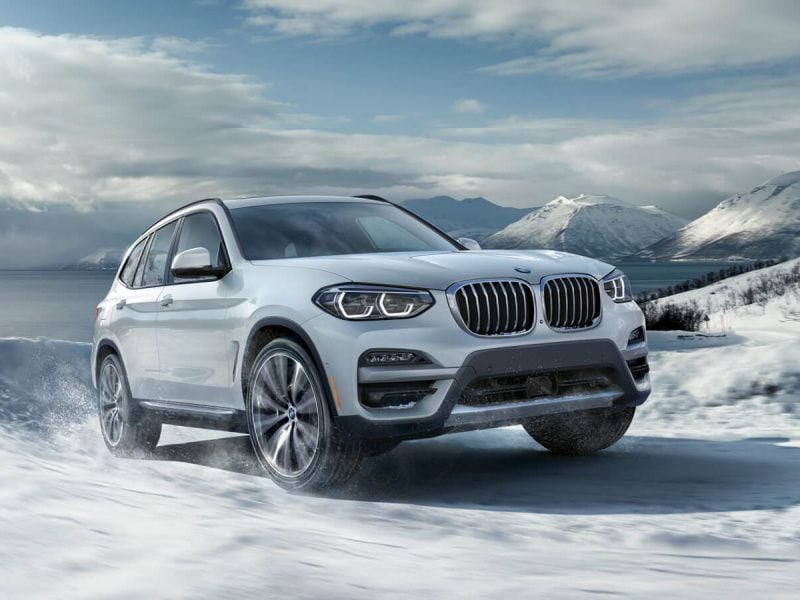
Photo by BMW
Comfort and Cargo
Both of these electrified SUVs feature very comfortable seats and quiet cabins, and they offer about the same interior space. At 112.8 inches, the BMW’s wheelbase is nearly 2 inches longer than the Audi’s, but somehow the Q5 has about an inch more rear legroom. Both seat five comfortably if the ride is short.
The slightly longer BMW, however, offers a bit more cargo space. There’s about 27 cubic feet of space behind its backseat and about 61 cubic feet with its rear seats folded down. But the Audi isn’t far behind with 25 cubic feet of cargo space behind its backseat and a maximum of 53 cubic feet.
Tie
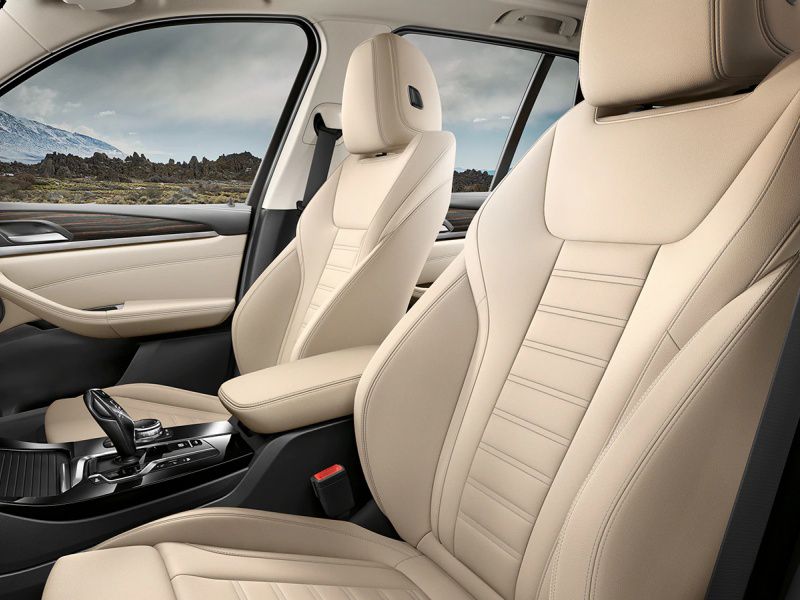
Photo by BMW
Infotainment System
Once a messy maze of menus, BMW’s iDrive infotainment system has now evolved into one of the easiest to use. The X3 xDrive30e comes with a standard 10.25-inch touchscreen, navigation, a slick digital gauge cluster, and wireless Apple CarPlay. Surprisingly, the system does not support Android Auto.
The Audi’s infotainment system is also intuitively designed and very easy to use. A 10.1-inch touchscreen is standard, and the system features wireless Apple CarPlay and Android Auto, which gives it an edge over the X3. Both systems can be also be controlled by voice commands. Audi’s configurable digital gauge cluster, which we prefer over the BMW’s for its clean design and slick graphics, is standard on two of its three trim levels.
Audi Q5 55 TFSI e
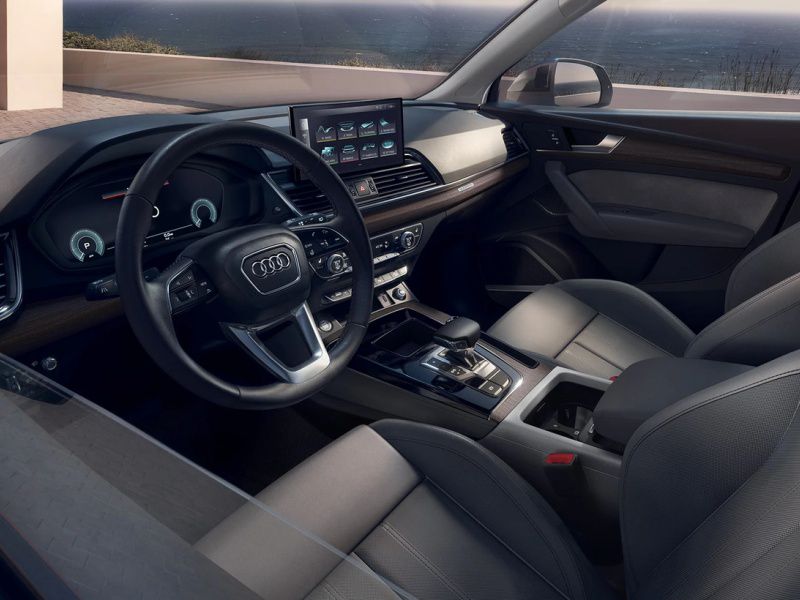
Photo by Audi
Safety and Technology
Both of these German SUVs come with standard all-wheel drive and have been awarded overall safety scores of five out of five stars by the National Highway Traffic Safety Administration. Both also performed very well in crash tests executed by the Insurance Institute for Highway Safety.
Many driver aids are included on both vehicles, including automatic emergency braking. Audi also includes a lane-departure warning. Our X3 test car was loaded with optional packages that added a land-departure warning, blind-spot monitoring, a rear cross-traffic alert, adaptive cruise control with stop-and-go capabilities, lane-keep assist with side-collision avoidance, and a front cross-traffic alert. Similar systems are also offered on the Q5.
Tie
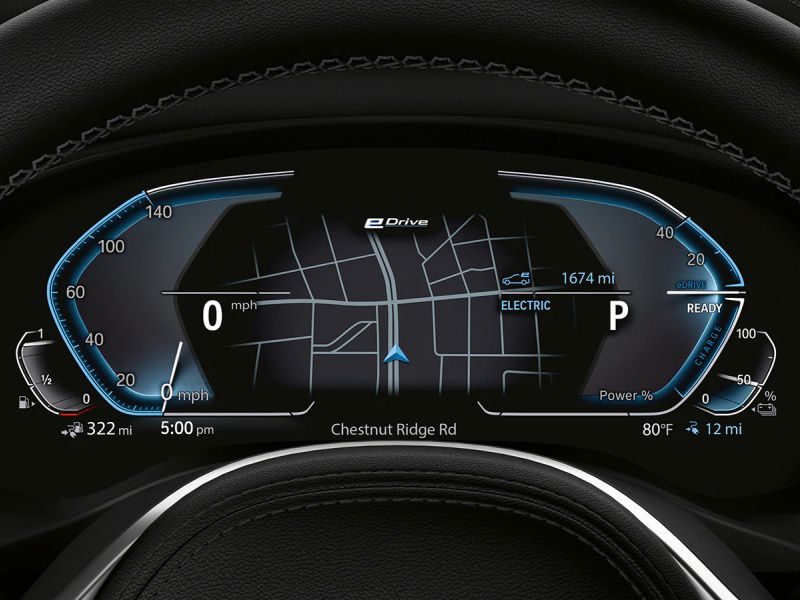
Photo by BMW
Power and Performance
This is where the Audi shows the BMW its taillights, literally. Although both SUVs are powered by a turbocharged 2.0-liter four-cylinder engine, an electric motor, and a small battery pack, the Audi has significantly more power. Its total combined system output is a seriously strong 362 horsepower and 369 lb-ft of torque, enough to get it from 0 to 60 mph in just 5.0 seconds. Put its pedal to the floor and it’s bye-bye BMW.
The BMW’s combined output is 288 hp and 310 lb-ft of torque. BMW says it hits 60 mph in 5.9 seconds. That’s not bad, and it feels quick around town, but the Audi is significantly quicker. We also prefer the Audi’s seven-speed dual-clutch transmission, which is just more responsive than the BMW’s eight-speed automatic. Both SUVs have paddle shifter on their steering wheels for manual control.
Audi Q5 55 TFSI e
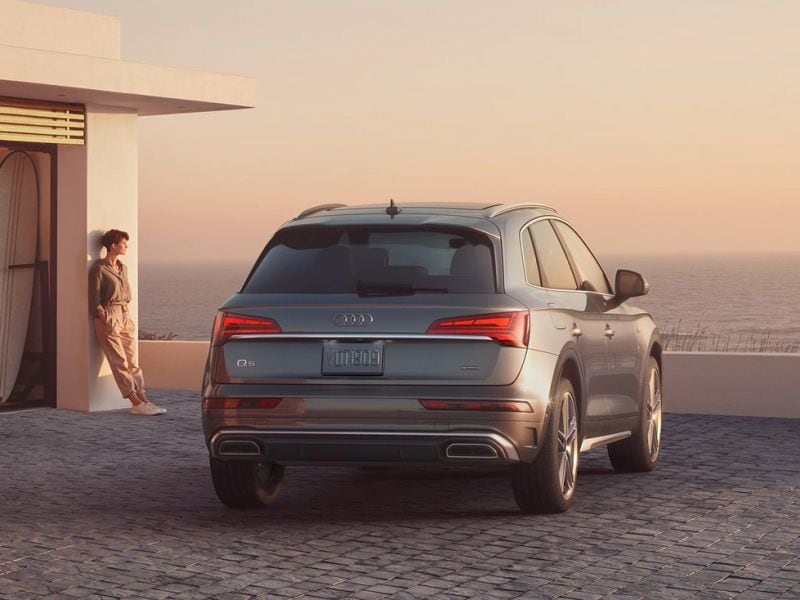
Photo by Audi
Battery Range
An EV’s MPGe ratings from the Environmental Protection Agency are a calculation of its efficiency. They’re similar to the miles per gallon rating of conventional gas-powered SUVs. The 2021 Audi Q5 has a 50 MPGe combined rating, which isn’t as good as the BMW’s 60 MPGe rating, but it does have a slightly larger battery pack than the BMW and a considerably larger gas tank.
In the real world, this adds up to a combined fuel economy estimate of 27 mpg, 400 miles of total range, and 19 miles of all-electric driving. Those numbers beat the BMW, which has a combined fuel economy estimate of 25 mpg, just 340 miles of total range, and 18 miles of all-electric range.
Audi Q5 55 TFSI e
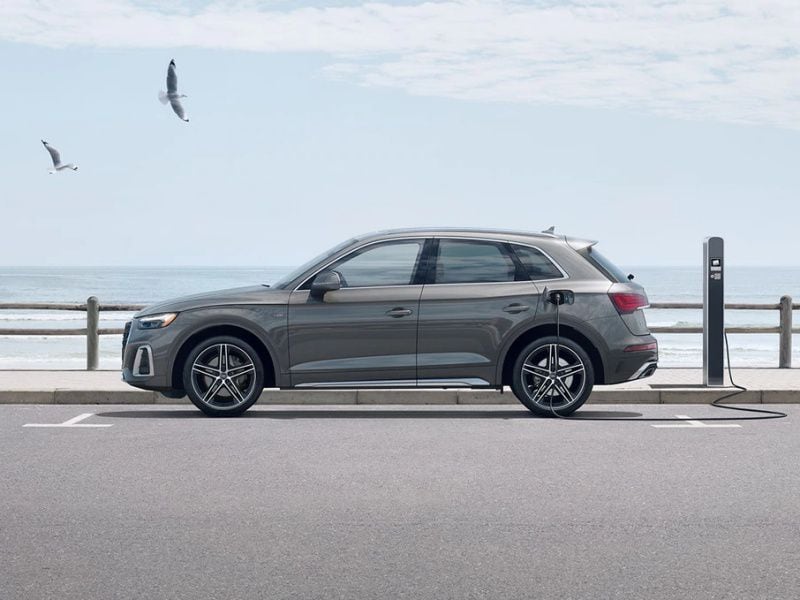
Photo by Audi
Driving Dynamics
Both of these SUVs weigh more than 4,500 lbs, so they’re not as fun to toss around as the conventional gas-powered versions, but they both handle surprisingly well. Neither feels particularly big and bulky from behind the wheel, and they’re both well balanced with precise steering and strong brakes. Plus, their all-wheel-drive system and big tires really grip the road. Each is engaging to drive — in fact, the BMW feels better the harder you push it — but it’s the Audi that’s more entertaining to pilot.
Its superior power and acceleration cannot be ignored. It’s just so much quicker than the BMW. You can’t help but put your foot down, hard, just to feel its thrust. It also has more communication in its steering, and its suspension tuning strikes a better balance between luxury and sport. We prefer its ride quality over a wider variety of road surfaces. The BMW is refined and fun to drive, but overall it’s the Audi that manages to be more responsive and a bit more comfortable.
Audi Q5 55 TFSI e
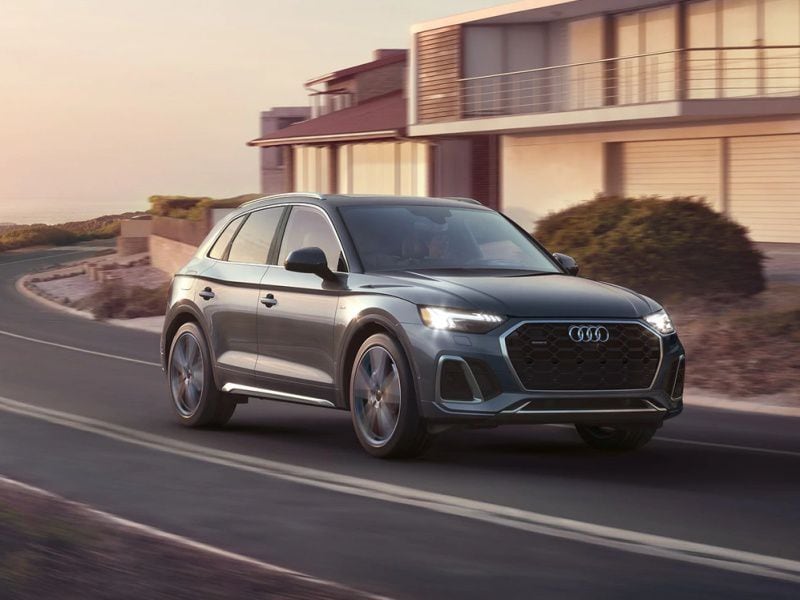
Photo by Audi
Value
The 2021 Audi Q5 55 TFSI e has a base price of $52,895, including a $995 destination fee. The Premium Plus trim level costs about $3,000 more and the top-of-the-line Prestige, which basically includes everything but the kitchen sink, costs $62,695.
Despite the Audi’s superior performance, the BMW is the better value. Prices start at $50,595, including $995 for destination, which makes it one of the least expensive entries in this class. With options, which included heated seats, a heated steering wheel, larger 19-inch wheels and performance tires, leather upholstery, a panoramic sunroof, and the additional safety systems, our test car cost just over $61,000.
BMW X3 xDrive30e
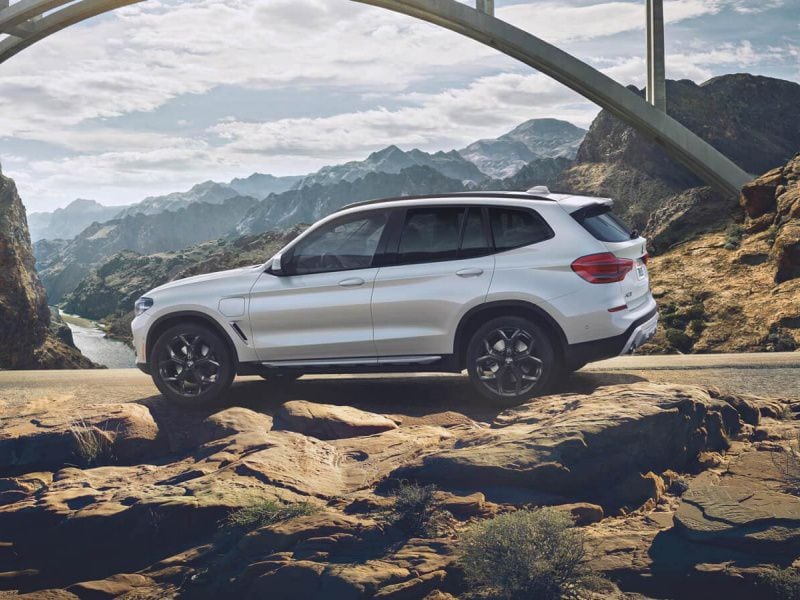
Photo by BMW
Verdict
BMW’s first plug-in hybrid version of its X3 lives up to the hype. It’s sophisticated, refined, comfortable, luxurious, and fun to drive. It offers sharp design, excellent driving dynamics, an impressive array of technologies, and a richly appointed interior. It’s also priced well. It’s a strong value and offers just enough efficiency and range to make sense for a great number of SUV buyers.
However, it’s the Audi Q5 that wins this fight because of its greater overall driving range, vastly superior power and acceleration, the additional features of its infotainment system, and the smile it puts on our face when we drive it. The BMW may be a slightly better value, but the Audi is the better vehicle.
Audi Q5 55 TFSI e
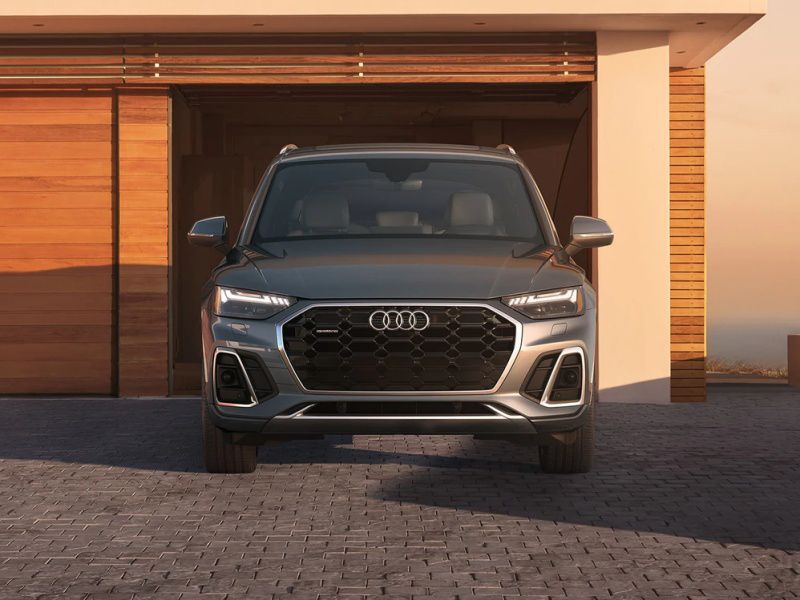
Photo by Audi